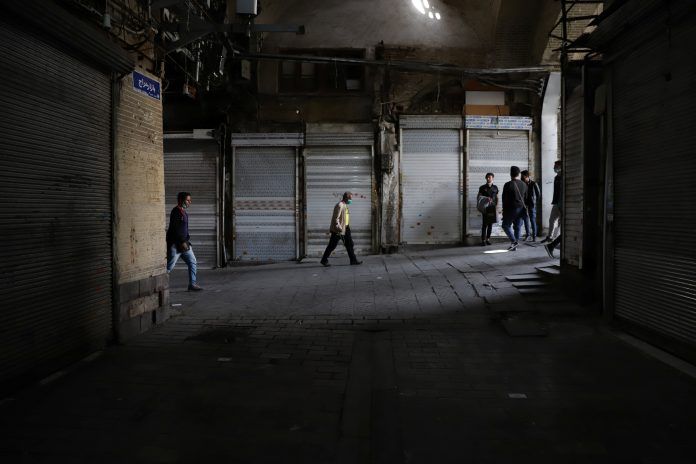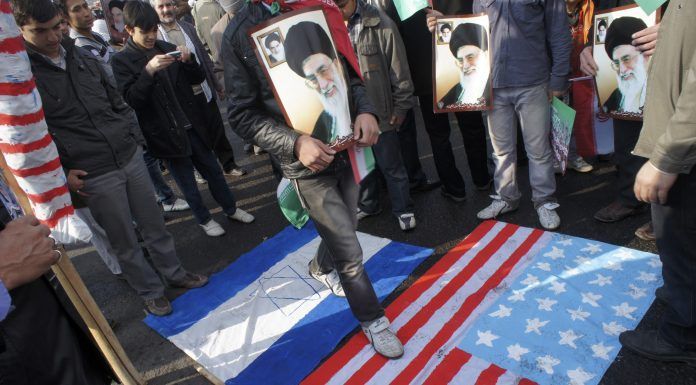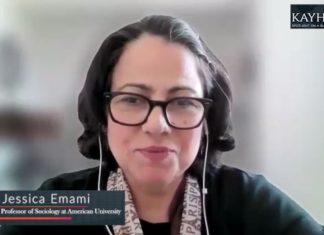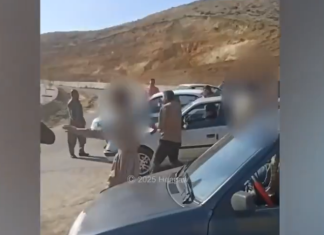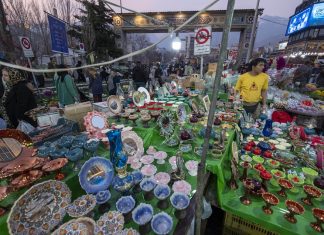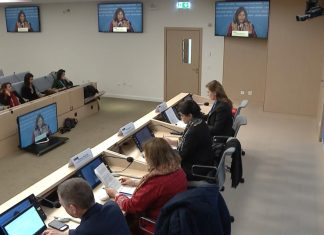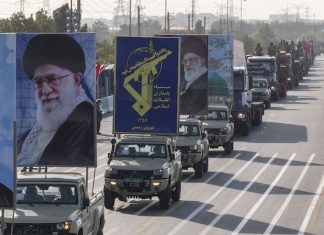Iran is experiencing the most severe economic crisis in 100 years, with ordinary Iranians and wage-earners bearing the brunt of the hardship. The Islamic Republic’s 13th government, headed by President Ebrahim Raisi, has not articulated a comprehensive and detailed plan to improve conditions since taking power in early August.
It is also unclear whether the government’s foreign policy includes plans to persuade the international community to ease or lift sanctions that have crippled the Iranian economy.
Economic data predicts a catastrophic meltdown for the Iranian economy if the trend continues. The inflation rate in Iran has surpassed the 50 percent mark, and some data suggests that the actual figure is as high as 70 percent. Despite promises by President Raisi and his government to lower inflation and control prices, the exchange rate continues to flounder, and the treasury and foreign exchange reserves are severely depleted.
Recent reports showed that less than 50 percent of the goals listed in the government’s 2021-22 budget had been achieved by early August. Less than half of the revenue projected for the first quarter (starting on March 21) was actually generated. Even if the government does not overspend, the budget deficit for the first quarter remains at 50 percent.
The crisis will undoubtedly worsen because of the increasing foreign exchange rate, the devaluation of the rial, and government spending caused by its failure to control the coronavirus epidemic.
Iran Energy Workers Hold Wage Protests as Economy Hit by Economic Mismanagement, Sanctions
The Majlis (Iranian Parliament) Research Center estimated that the government’s budget deficit would reach $112 billion by March 2020 if the economic sanctions remained in place and Iran could not sell its oil. The government will be forced to issue bonds which will increase its already massive debt.
The International Monetary Fund (IMF) report said Iran’s accumulated debt stood at around $230 billion, or 35 percent of its gross domestic product (GDP) in 2020. According to the 2020-21 budget, the government issued $340 billion in bonds in one year.
Iran is facing economic perils, given the severe depletion of its foreign exchange reserves, the massive effects of the coronavirus on its domestic economy, and the almost zero investment in the country.
Iran Budget and Planning Organization reportedly has warned that the exchange rate could increase to 2,850,000 rials to a dollar if sanctions are not lifted. If the Islamic Republic remains in power and if sanctions are lifted, the exchange rate will still reach 550,000 rials to a dollar by 2027. The same report noted that if sanctions remain in place, Iran’s overall debt will be half of its GDP by 2014.
Iran needs investments to increase productivity, reduce unemployment, generate revenue, and strengthen the rial. Foreign investment is near zero in Iran, and the risk of investing in the country is so significant under the Islamic Republic regime that many people take their money out of Iran. Some $17 billion have been taken out of the country in the past 16 years.
While investors continue to take money out of the country and productivity is next to nothing, there is no sign that sanctions will be lifted and foreign exchange reserves will be replenished soon.
Iran remains on the Financial Task Force (FATF) black-listed countries for its refusal to adopt its recommendations. As a result, Iran has no access to international banking and financial systems, which means foreign governments and companies cannot trade with Iran even if the sanctions are lifted.
In February 2020, the FATF kept Iran on its black-listed countries for failing to enact the Palermo Convention, the Countering the Financing of Terrorism (CFT), and Anti-Money Laundering (AML), blocking Iran from international banking system transactions.
Lifting U.S. Sanctions Will Not By Itself Revive Iranian Economy, Officials Say
The FATF is an intergovernmental organization founded in 1989 at the initiative of the G7 to develop policies to combat money laundering and terrorism financing. It operates under the auspices of the Organization for Economic Co-operation and Development (OECD), an intergovernmental economic organization with 36 member countries, founded in 1961 to stimulate economic progress and world trade.
President Raisi made no less than 50 economic promises to voters during the elections, but so far, he and his cabinet have not fulfilled even a single one. In a television interview last week, Raisi said the treasury was empty, the recession would continue, and inflation would rise.
Instead of working on an effective policy to tackle the economic crisis, Raisi’s plan for improving the situation is only a series of musts and must-nots. His economic team has no coherent and comprehensive plan to revive the country’s economy.
While a small group of well-connected people continues to prosper, most Iranians struggle to make ends meet. A recent report by the Ministry of Labor and Social Affairs said one out of three people in Iran lives in “absolute poverty.” Some reports have shown that between 2018 and 2020, Iranian households lost 34 percent (one-third) of their annual income. There has also been a sharp drop in school enrolment caused by poverty, and the number of children having malnutrition has doubled in the past two years.
Iran’s Supreme Leader Ayatollah Ali Khamenei had vowed to make the Islamic Republic the dominant power in the region and one of the world’s strongest economies by 2025. However, a report released by the World Bank in September showed that Iran, with a GDP of $192 billion, is ranked 51st in the global economy, and that is half of the United Arab Emirates (UAE) and one-fourth of Turkey’s GDP.
Hyperinflation, recession, unemployment, and national debt are not the only indicators that show the Islamic Republic’s failure to manage the economy.
Hassan Lotfi, a member of the Social Committee of the Majlis, has said the parliament did not know the average daily consumption of poultry in the country or how much was produced domestically or imported. Mr. Lotfi noted it was unclear how much of the raw material used by poultry farmers is produced domestically and or imported.
In the absence of actual data, the government operates on assumptions.
“The current government continues the policies of all the previous ones,” Lotfi said. “We have not seen a ministry that decides based on real data.”
Iran has the potential to become one of the world’s largest economies in the 21st century, given its massive oil and gas reserves and other resources. The Islamic Republic’s gross mismanagement of the country has put it at the bottom of the global economic ladder, but Iranian leaders continue to blame every problem on the sanctions.

